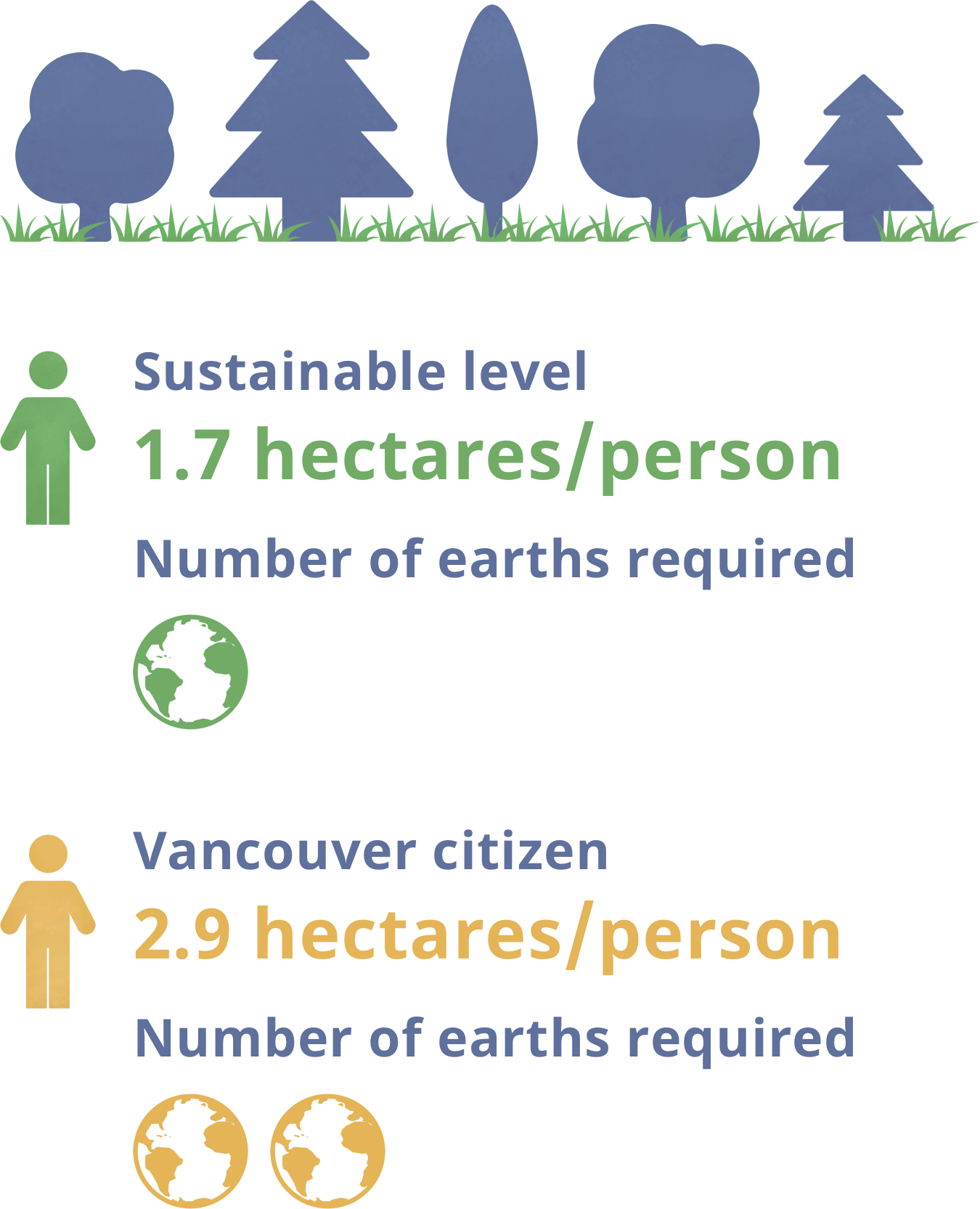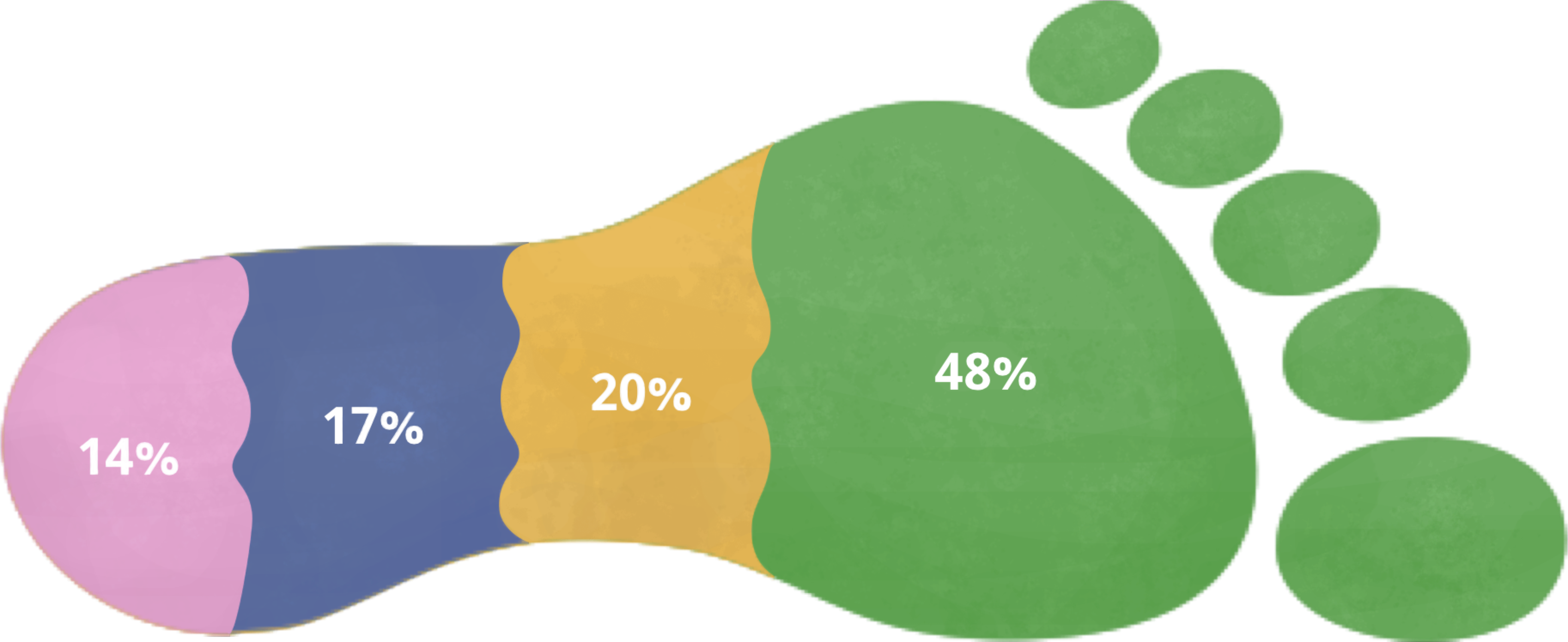Vancouver Ecological Footprint
Ecological footprint is an estimate of how much biologically productive land and water area an individual or population needs to produce all the resources it consumes and to absorb the waste it generates. It is measured in global hectares (gha) per capita, where a global hectare is a biologically productive hectare with globally averaged productivity for a given year.
Based on current global population and biological productivity levels, an average of 1.7 hectares is available for each person on the planet.
Vancouver’s total ecological footprint is 1,820,000 gha, which is an area 170 times bigger than the City’s municipal boundary.
Vancouver’s current per capita footprint is 2.9 gha, excluding the resource demands associated with national and provincial services such as the military. If we were to add these national and provincial services, Vancouver’s per capita footprint increases by at least 18%, to 3.4 gha/person.
This means that approximately 2.0 earths would be required to support the global population if everyone had lifestyles comparable to a Vancouver resident.

Causes of Vancouver's ecological footprint
For Vancouver, consumption of food represents the largest impact area (48%), followed by a relatively even distribution between transportation (20%), buildings (17%), and consumables and waste (14%)
- 40% of the food component is due to red meat consumption and 14% is due to dairy consumption.
- 90% of the footprint associated with goods that we consume is due to production and transport, rather than use and disposal.
- Paper and plastic represent over half of the footprint associated with consumables and waste.
- Three quarters of transportation footprint is due to private vehicles.

